This is the testimony of a classically-trained Grandmother who recommends Alpha-Phonics for teaching reading.
(from Mary Beck Rutkowski, September 2021)
I was blessed to hear this grandmother’s story. She granted me the privilege of sharing her memories here, which I’m sure you will enjoy as much as I do.
“The public schools here were much more advanced into the weakness and failed methods of teaching- so it seemed we were in ‘reverse’ gear, so to speak.”
Laying the Background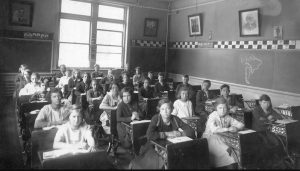
“I attended Catholic Parochial school on Long Island, NY, where I was born. Excellent education and though I’d never heard it called as being the ‘classical’ method, it was exactly that.
“Memorization in every subject -rules of grammar, parts of speech, diagramming sentences, — Multiplication tables, addition and subtraction, factors, decimals, percentages, ratio and proportion, square root… History – names of countries, their general history – boundaries, wars, and causes. Geography – oceans, rivers, lakes, mountain ranges…. On and on. As in the Classical trivium, memorization was key.
 “After grammar school, I attended a Catholic high school. Sadly, it was not anything like I had expected. Nothing like the follow-up to the first level of the Classical method. I took 2 years of Latin, a year of French and did very well in both. English, even in grammar school, was my favorite and best class – I received the graduation award in English. Competed in spoken French in a NY state-wide competition and scored 6th. Won speech competitions. All this is to lay the background of how, where I was educated to further define what my interests were and where I was at my happiest and my best.”
“After grammar school, I attended a Catholic high school. Sadly, it was not anything like I had expected. Nothing like the follow-up to the first level of the Classical method. I took 2 years of Latin, a year of French and did very well in both. English, even in grammar school, was my favorite and best class – I received the graduation award in English. Competed in spoken French in a NY state-wide competition and scored 6th. Won speech competitions. All this is to lay the background of how, where I was educated to further define what my interests were and where I was at my happiest and my best.”
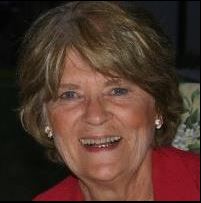 Moving Forward
Moving Forward
“Please, I will believe you do not take it as bragging. My first child, a daughter, attended our local public school – circa 1967. At that time, the public schools were fairly ‘ok’ and she had a superb Kindergarten teacher, a marvelous lady, ‘Old School’ in every way. She then went on to first grade, another fine teacher. Our son followed 3 years later and did well.
“In 1968, we moved from Long Island to northern Idaho, and that is where we have lived since. The public schools here were much more advanced into the weakness and failed methods of teaching – so it seemed we were in ‘reverse’ gear, so to speak.”
Avoiding the Pitfalls of Public Education
“There was some talk of bringing in ‘sex education’ !!! The other pitfalls and errors of ‘Public’ (Government) schooling became increasingly apparent to me, and we finally put them in Christian school. (As many of us know, this choice does not always meet expectations, but it was the best choice available then.) About this time was when I began to hear of Home Schooling. I did a little of this with my children but did a lot more with my Grand Children and even more with my Great Grand Children.”
Meeting Sam Blumenfeld and His Work
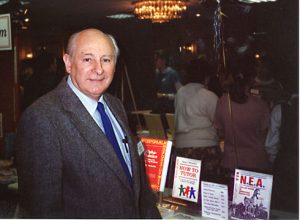 “Somewhere during these years, I heard of Mr. Samuel Blumenfeld !!! I read his book, – “NEA – Trojan Horse in American Education” That was such an eye-opener and I went on and read many more of Mr. B’s books and whatever was available then. He came through Spokane WA on a speaking tour and of course, it was beyond superb.
“Somewhere during these years, I heard of Mr. Samuel Blumenfeld !!! I read his book, – “NEA – Trojan Horse in American Education” That was such an eye-opener and I went on and read many more of Mr. B’s books and whatever was available then. He came through Spokane WA on a speaking tour and of course, it was beyond superb.
“It was customary that the host state would take the guest speaker out for dinner – we did and somehow, it was my good fortune to share a small table with Mr. B. He talked about the proper way to teach Reading, Phonics and I ordered his teaching materials – “Alpha-Phonics”.
From Alpha-Phonics to the 6th year McGuffey Reader
“I have used phonics over the years with children, Grands and Great Grands… have taught my Great Grandson to read just over the last year or so. He now reads everything he sees and can read from the 6th year McGuffey Reader. I gave away my original copy of Alpha Phonics to one granddaughter. Quickly ordered another one.”
Commitment to Alpha Phonics
“Alpha Phonics! A simple, accurate and easily understood method of teaching children how to read. It’s a happy thing to see students quickly learn and to enjoy it!
“It is a sad thing to think of little eager minds being taught the senseless, useless “Look, Say’ nonsense. Alpha Phonics teaches the Alphabet; that every letter has a sound; the vowels are taught and the sound/sounds of each one. Slowly, in perfect sequence, consonants are merged with vowels to form simple, one syllable words and moves on easily to more syllables per word.”
“Children learn, like and enjoy it because it makes sense, satisfies the mind and the thrill and excitement of being able to actually see the sound symbols and know what they mean ! And then to progress on to many words of many syllables! I have taught children, Grandchildren and now Great Grandchildren the sweet delight of knowing how to read easily! Out of the darkness, the confusion. Thank You, Sam Blumenfeld for all your fine work!”
I Agree
I not only agree with Mrs. Rutkowski’s raving descriptions of Alpha Phonics, but I share the same results.
When using Alpha Phonics, students are actually reading simple words almost immediately, and simple sentences by lesson 3 (which can even be the first day). No time is wasted on frivolous busy work.
Many testimonies have said the same. One mother once wrote to us, quoting her happy daughter who had barely begun the Alpha Phonics course, “Oh, Mommy!” she said, “I AM READING!”
And, I’m certain that she was.
by Meg (Alpha-Phonics mom of 9)
 MS, Exceptional Student Education with emphasis on Applied Behavior Analysis (Univ. of W. Florida)
MS, Exceptional Student Education with emphasis on Applied Behavior Analysis (Univ. of W. Florida)
MA, psychology (Grand Canyon University)
Bachelor of Arts (Northwest Nazarene Univ.)
TESTIMONIALS
Did you know every year many 1,000’s of parents teach their own children to READ? Many of them have used Alpha-Phonics because they have found it can easily be used to teach their children to read. Your Kids can make a lot of headway in only a couple of weeks with this proven program. Alpha-Phonics is easy to teach, is always effective and requires no special training for the Parent. It works ! And it is very inexpensive. You CAN DO it !! Follow the links below to know all about the time-tested (37 + years) Alpha-Phonics program:


 School work is interspersed with a list of chores as the children care for livestock, join in with cooking, cleaning, and house construction. Yes, house construction!
School work is interspersed with a list of chores as the children care for livestock, join in with cooking, cleaning, and house construction. Yes, house construction! Another group of homeschooled children shows up some days, to help with house construction. I watched them skillfully re-enact the skills their father is teaching them. The conversations between the children include descriptions of their parents’ businesses, and comments about the efficacy of certain decisions.
Another group of homeschooled children shows up some days, to help with house construction. I watched them skillfully re-enact the skills their father is teaching them. The conversations between the children include descriptions of their parents’ businesses, and comments about the efficacy of certain decisions. My days include transporting children to events such as volleyball and football games and practices. I even watched the oldest child practice his skills in a cutting horse competition.
My days include transporting children to events such as volleyball and football games and practices. I even watched the oldest child practice his skills in a cutting horse competition.
 I admire the courage of the young parents who have committed themselves to the job of raising families amid perilous times, with little worry from the world outside.
I admire the courage of the young parents who have committed themselves to the job of raising families amid perilous times, with little worry from the world outside.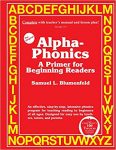
 WEBSITE
WEBSITE

 For Healy and her family, the back-to-school season comes at the end of a year marked by grief. Last August, Lucas lost his great-aunt to COVID-19 — she was the first of several family members to die from the disease.
For Healy and her family, the back-to-school season comes at the end of a year marked by grief. Last August, Lucas lost his great-aunt to COVID-19 — she was the first of several family members to die from the disease.


 Tracy Hill, the executive director of family and community engagement at Cleveland Metropolitan Schools, says she hopes these conversations lay the groundwork for caregivers to feel more comfortable sending kids back to classrooms in the fall.
Tracy Hill, the executive director of family and community engagement at Cleveland Metropolitan Schools, says she hopes these conversations lay the groundwork for caregivers to feel more comfortable sending kids back to classrooms in the fall.






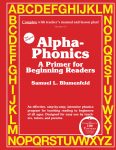



 “With their kindly aid, obtained at different times and in different places, I finally succeeded in learning to read. When I was sent on errands, I always took my book with me, and by doing one part of my errand quickly, I found time to get a lesson before my return. I used also to carry bread with me, enough of which was always in the house, and to which I was always welcome; for I was much better off in this regard than many of the poor white children in our neighborhood. This bread I used to bestow upon the hungry little urchins, who, in return, would give me that more valuable bread of knowledge. I am strongly tempted to give the names of two or three of those little boys, as a testimonial of the gratitude and affection I bear them; but prudence forbids: —not that it would injure me, but it might embarrass them; for it is almost an unpardonable offence to teach slaves to read in this Christian country.”
“With their kindly aid, obtained at different times and in different places, I finally succeeded in learning to read. When I was sent on errands, I always took my book with me, and by doing one part of my errand quickly, I found time to get a lesson before my return. I used also to carry bread with me, enough of which was always in the house, and to which I was always welcome; for I was much better off in this regard than many of the poor white children in our neighborhood. This bread I used to bestow upon the hungry little urchins, who, in return, would give me that more valuable bread of knowledge. I am strongly tempted to give the names of two or three of those little boys, as a testimonial of the gratitude and affection I bear them; but prudence forbids: —not that it would injure me, but it might embarrass them; for it is almost an unpardonable offence to teach slaves to read in this Christian country.” Another Event Pushed Douglass Toward Freedom
Another Event Pushed Douglass Toward Freedom I recommend reading the entire Frederick Douglas narrative. He very aptly describes the connection between literacy and freedom, which he proved in his own life. He acknowledged that it was actually a gift when his reading instruction was stopped so abruptly. This alerted him to the idea that literacy was the ticket to freedom.
I recommend reading the entire Frederick Douglas narrative. He very aptly describes the connection between literacy and freedom, which he proved in his own life. He acknowledged that it was actually a gift when his reading instruction was stopped so abruptly. This alerted him to the idea that literacy was the ticket to freedom. by Meg (homeschooling mom of 9)
by Meg (homeschooling mom of 9)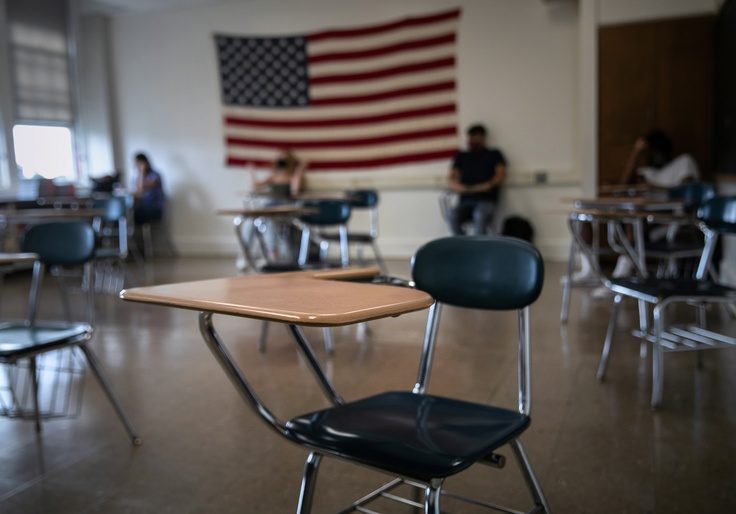

 ALPHA-PHONICS
ALPHA-PHONICS Nat Turner’s Rebellion and Laws against Reading Instruction
Nat Turner’s Rebellion and Laws against Reading Instruction The book “Nightjohn” by Gary Paulsen (1993) gives a fictionalized account of a slave who had gained his freedom, but risked that freedom by sneaking into cabins at night and teaching other slaves to read. When Nightjohn was found out, his punishment was the chopping-off of two of his toes. (A movie by the same name chose the punishment to be the chopping-off of a finger.)
The book “Nightjohn” by Gary Paulsen (1993) gives a fictionalized account of a slave who had gained his freedom, but risked that freedom by sneaking into cabins at night and teaching other slaves to read. When Nightjohn was found out, his punishment was the chopping-off of two of his toes. (A movie by the same name chose the punishment to be the chopping-off of a finger.)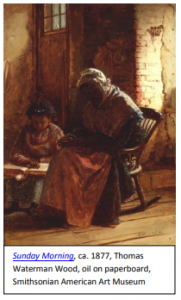 James Fisher of Nashville, Tennessee (former slave) wrote this: “I . . . thought it wise to learn to write, in case opportunity should offer to write myself a pass. I copied every scrap of writing I could find, and thus learned to write a tolerable hand before I knew what the words were that I was copying. At last, I found an old man who, for the sake of money to buy whisky, agreed to teach me the writing alphabet, and set up copying. I spent a good deal of time trying to improve myself; secretly, of course. One day, my mistress happened to come into my room, when my materials were about; and she told her father… that I was learning to write. He replied, that if I belonged to him, he would cut my right hand off.”
James Fisher of Nashville, Tennessee (former slave) wrote this: “I . . . thought it wise to learn to write, in case opportunity should offer to write myself a pass. I copied every scrap of writing I could find, and thus learned to write a tolerable hand before I knew what the words were that I was copying. At last, I found an old man who, for the sake of money to buy whisky, agreed to teach me the writing alphabet, and set up copying. I spent a good deal of time trying to improve myself; secretly, of course. One day, my mistress happened to come into my room, when my materials were about; and she told her father… that I was learning to write. He replied, that if I belonged to him, he would cut my right hand off.”
 by Meg (homeschooling mom of 9)
by Meg (homeschooling mom of 9) Ever heard of Dr. Frank C. Laubach?
Ever heard of Dr. Frank C. Laubach?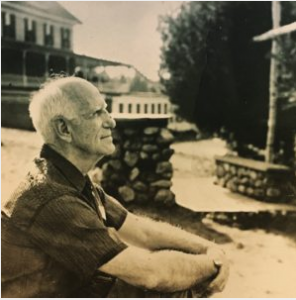
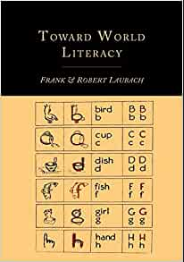 Laubach’s second accomplishment is told in another of his books, “How to Make the World Literate: the each one teach one way”.
Laubach’s second accomplishment is told in another of his books, “How to Make the World Literate: the each one teach one way”.
 How can I Teach using Systematic Phonics?
How can I Teach using Systematic Phonics?
 Alpha-Phonics
Alpha-Phonics The Alphabet Song!
The Alphabet Song! Water on the Floor
Water on the Floor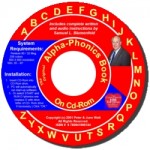 Alpha-Phonics the Book on CD Rom
Alpha-Phonics the Book on CD Rom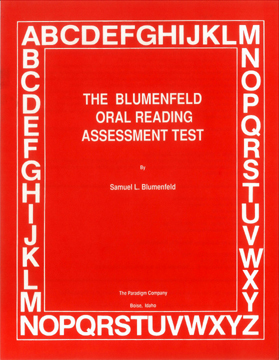 Blumenfeld Oral Reading Assessment Test
Blumenfeld Oral Reading Assessment Test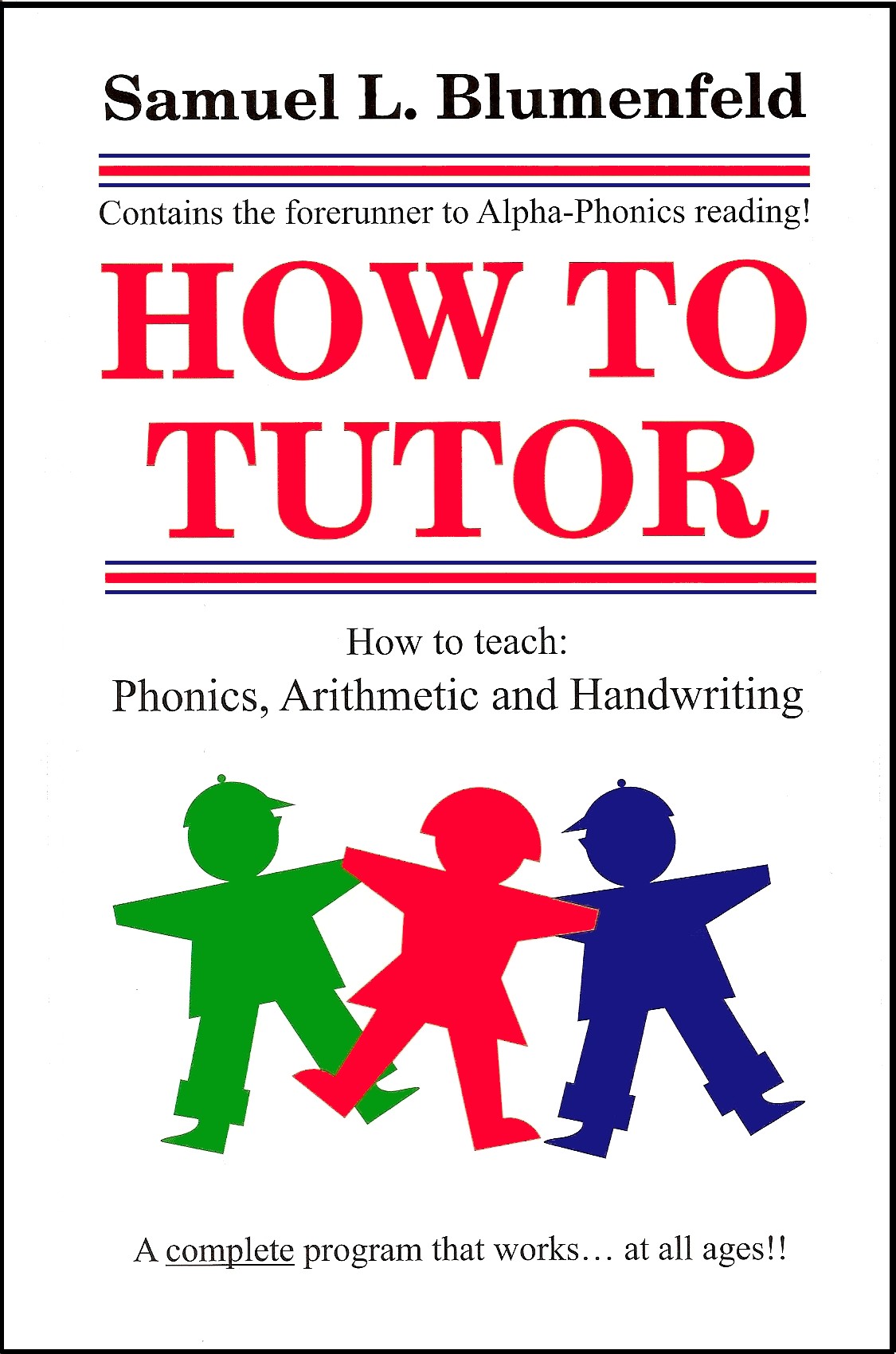 How To Tutor
How To Tutor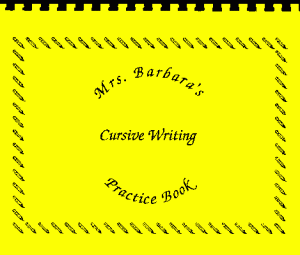 How To Tutor Cursive Handwriting Workbook
How To Tutor Cursive Handwriting Workbook